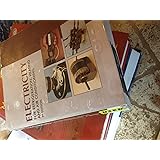Many homes struggle with feeling truly inviting. Unattractive spaces often result from common interior design mistakes. Understanding and correcting these issues transforms your living environment.
The video above highlights key missteps homeowners make. This article expands on those crucial points. We provide actionable strategies for a more beautiful home. Avoid these widespread design blunders for good.
Overcoming Common Interior Design Mistakes
Achieving a cohesive home look feels challenging. But it doesn’t require a design degree. You just need to know what to avoid. Learning from common errors is a powerful start. Let’s dive into fixing these issues.
Cultivating Design Consistency and Visual Rhythm
One major interior design mistake is a lack of consistency. Your home should not feel disjointed. Rooms should flow seamlessly into one another. A unified aesthetic creates harmony.
Imagine walking into a space. Each room feels like a new house. This makes visitors uncomfortable. It can also make your home seem smaller. Consistent elements tie everything together visually.
Repeating Key Elements for Cohesion
Focus on a core color palette. Select two main colors and an accent. Repeat these colors throughout different rooms. This naturally guides the eye.
Consider textures and materials. Perhaps you love natural wood. Use similar wood tones in furniture or flooring. A consistent metallic finish, like brushed brass, also works.
Apply this consistency strategically. Space repeating items across the room. For example, use the same throw pillow fabric in two corners. This creates a visual rhythm. Your eye moves gracefully through the space.
Even small details matter. Picture matching curtain hardware. Or similar styles of picture frames. These small touches add up. They build a cohesive design story.
Mastering Clutter Control and Smart Storage
A beautiful home feels curated, not chaotic. Unwanted items left out create visual noise. This is a common interior design mistake. Nobody wants to see your everyday clutter.
Beautiful homes showcase intentional pieces. Every item on display serves a purpose. It contributes to the room’s aesthetic. The rest of your belongings need a home.
Strategic Decluttering and Hidden Storage Solutions
Start by identifying true display items. These are decorative pieces or cherished objects. They add character to your space. Everything else needs to be stored away.
Functionality is key for storage. Think about what you use daily. These items need easy access. But they don’t need to be visible. Closed cabinetry is your best friend.
Install cabinets in living areas. Add shelving units with doors. These hide items beautifully. They maintain a clean, tidy look. Consider built-in storage solutions too.
Baskets are incredibly versatile. Use them for blankets, magazines, or toys. They look good while hiding mess. Decorative boxes on shelves serve a similar purpose.
Look for multi-functional furniture. Ottomans with storage are perfect. Console tables with drawers help. These pieces offer hidden storage. They keep your living areas serene. Taming clutter elevates your overall home aesthetic.
Anchoring Decorative Items for Visual Clarity
Small decorative items can look messy. A collection of small objects feels busy. Your eye struggles to find focus. This is a subtle yet impactful interior design mistake.
Visually busy surfaces are overwhelming. Each item demands individual attention. This makes a space feel cluttered. Even if items are organized, they can still feel disjointed.
Grouping Decor for Impact and Harmony
The solution is simple: anchor your items. Group smaller pieces together. Use a tray, a book, or a small pedestal. These items act as a visual base.
Think of a coffee table vignette. Place a vase, a candle, and a coaster set. Group them on a decorative tray. They now form one cohesive unit. Your eye processes them as a single element.
Books can serve as anchors. Stack a few large books. Place a small sculpture on top. This creates height and interest. It still feels grounded and intentional.
Even a simple cutting board works. Use it on a kitchen counter. Place your oil and vinegar bottles on it. They become an intentional display. This reduces visual chaos.
This technique applies everywhere. Use it on bookshelves. Style your nightstands. Apply it to bathroom countertops. Anchoring helps define your design intention. It brings order to decorative displays. It makes your home feel more polished and thoughtful, addressing key interior design mistakes.











